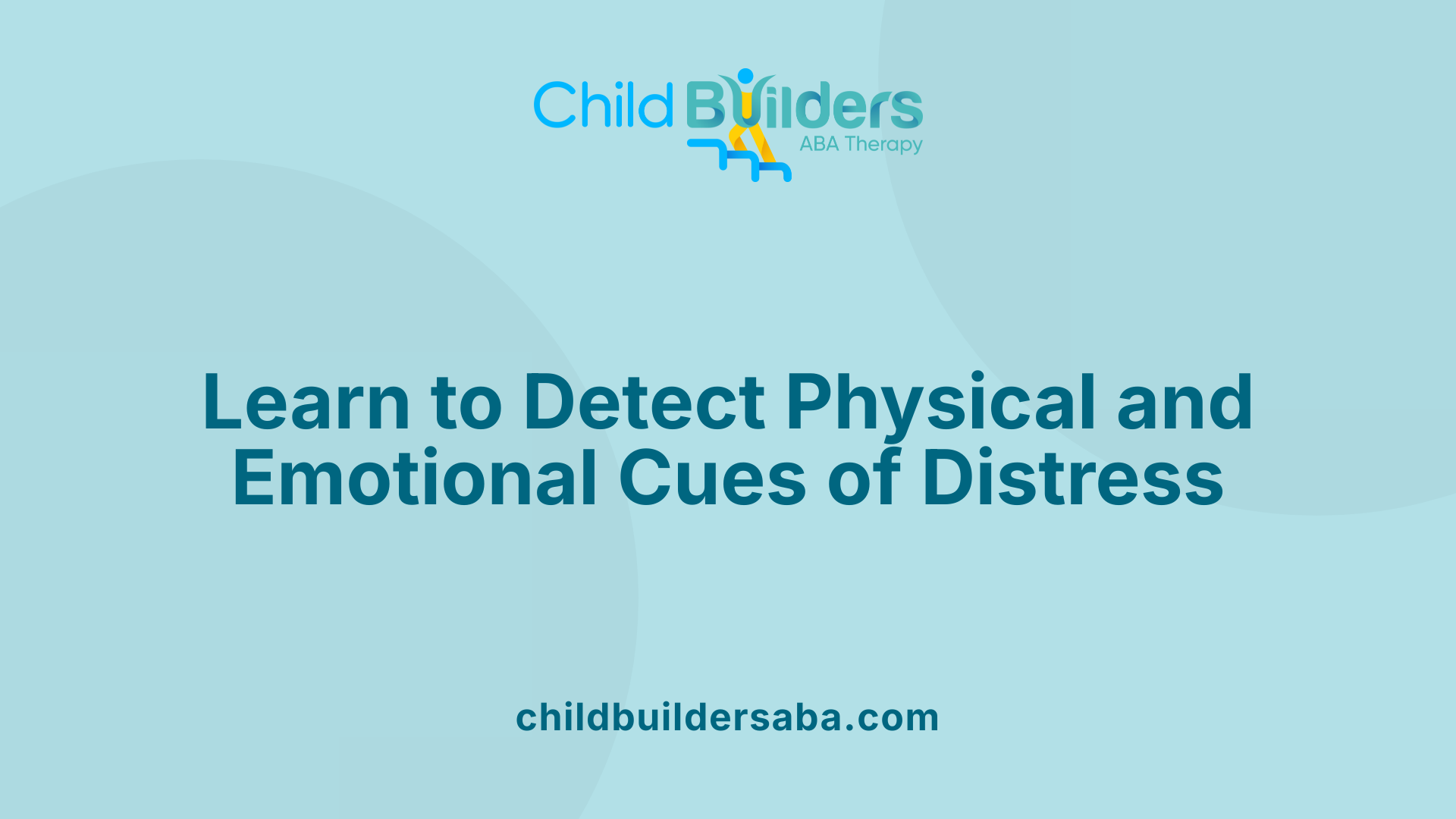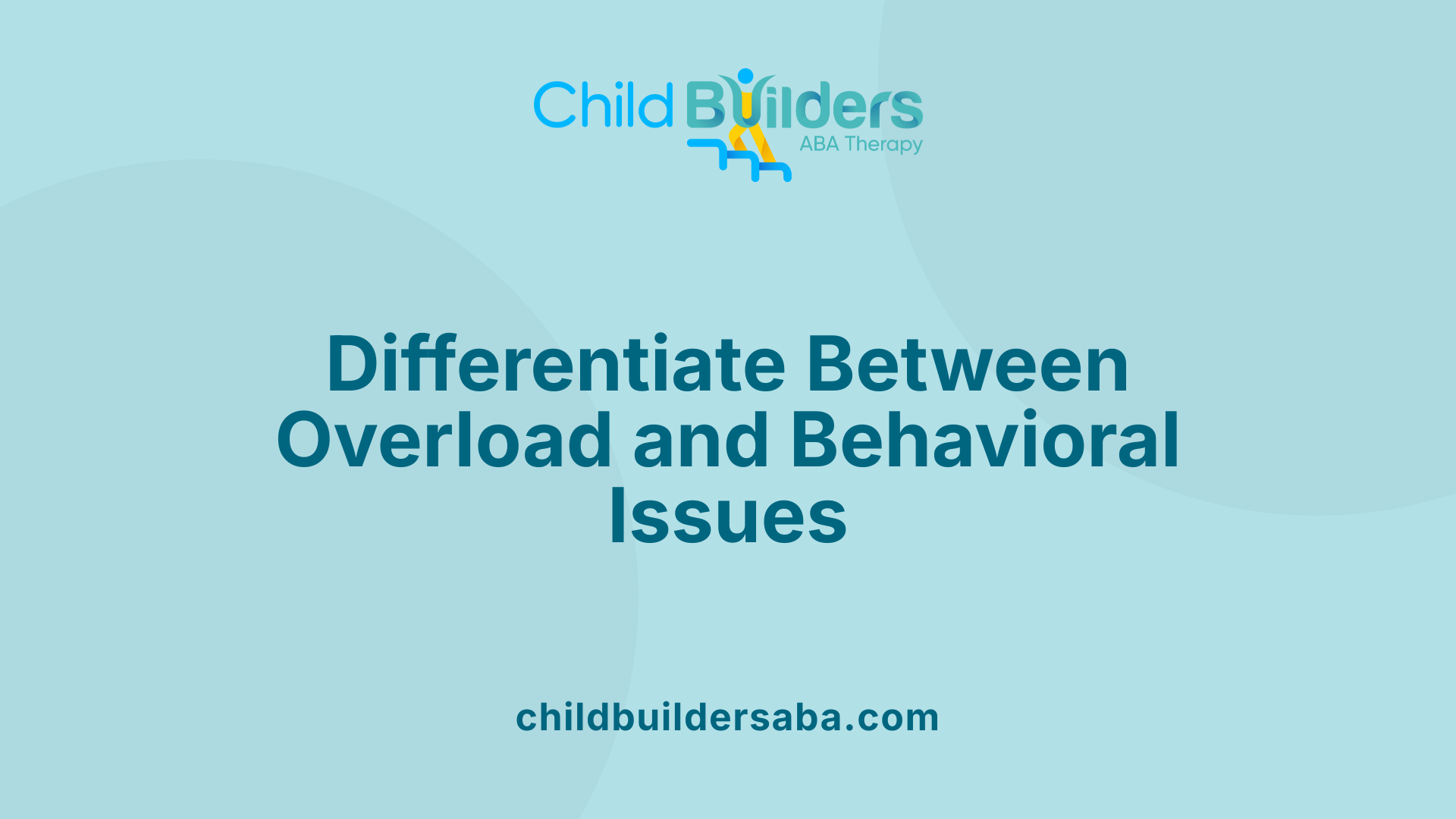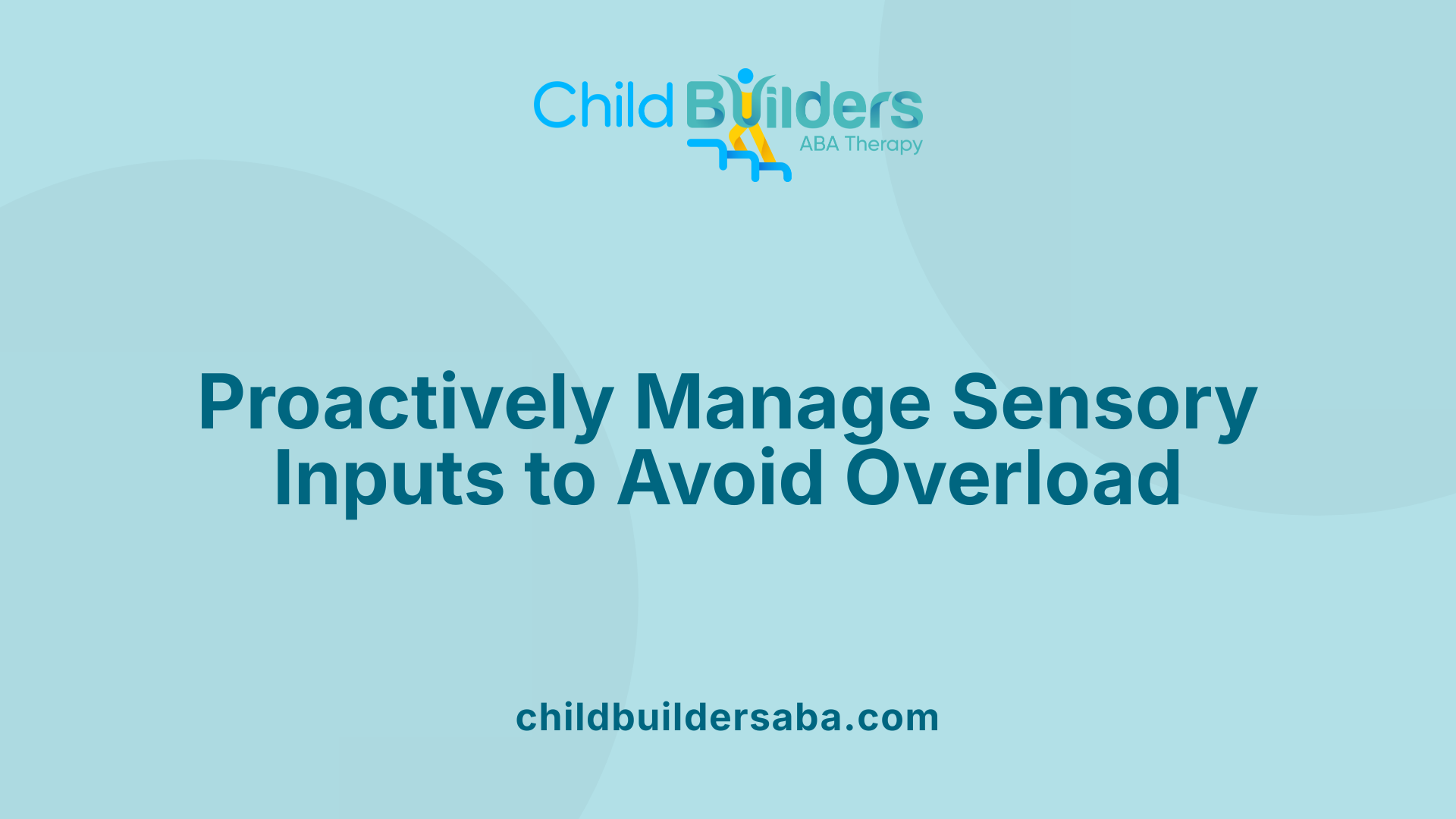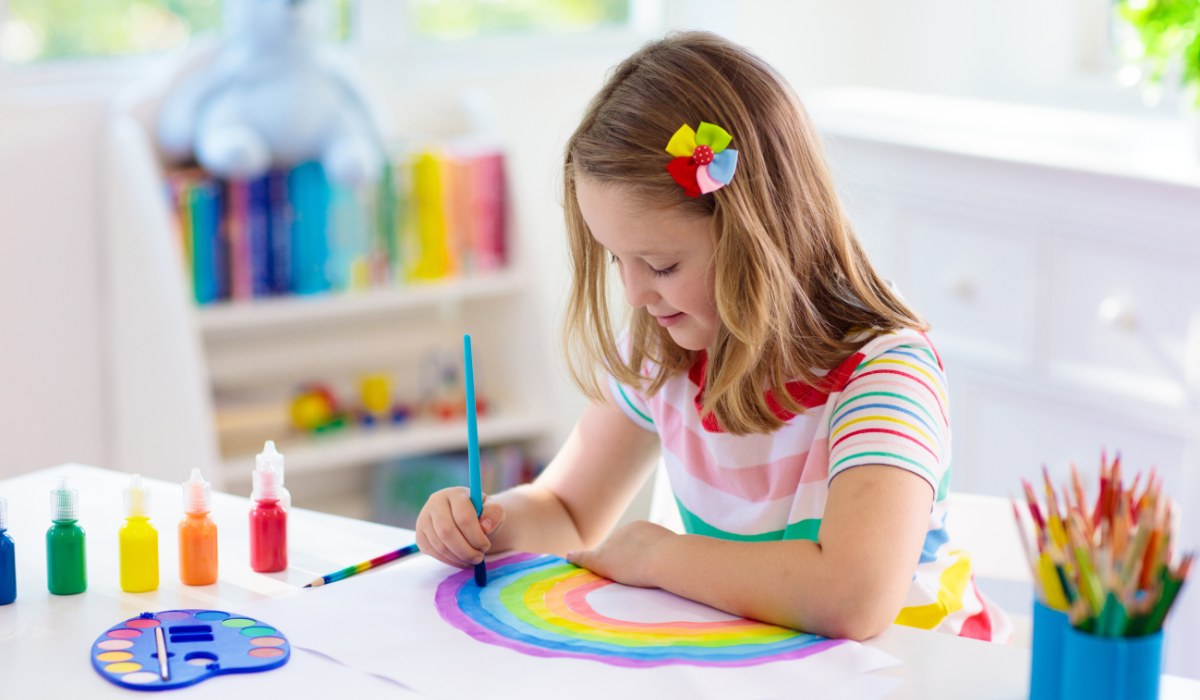Calming Strategies For Kids With Autism

Understanding and Managing Overwhelm in Children with Autism
Children with autism often face sensory sensitivities that can lead to distress, overload, and meltdowns. Recognizing the signs early and implementing tailored calming strategies can significantly improve their emotional well-being and aid in self-regulation. This article explores practical techniques, environmental adjustments, and support systems designed to foster calmness and resilience in children with autism.
Recognizing Early Signs of Distress and Overload

What are common signs that a child with autism is experiencing distress, overload, or overstimulation?
Being attentive to early warning signs can make a significant difference in helping children with autism manage their sensory and emotional needs. Early indicators often include physical behaviors such as covering ears or eyes to block out overwhelming stimuli, fidgeting, and pacing. These actions are common responses to sensory overload, where the environment becomes too intense or unpredictable.
Additionally, signs like shallow or rapid breathing, tense body language, clenched fists, or shifting posture can signal that a child is struggling with internal stress. Emotional reactions may escalate to increased irritability, withdrawal from social interactions, heightened anxiety, or tears. These emotional cues often accompany or follow physical signs, acting as early alerts for caregivers.
Behaviorally, children might engage in more frequent or intense stimming—repetitive movements or sounds—as a coping mechanism. Tantrums, difficulty focusing, and seeking sensory input such as water, swinging, or movement are also common behaviors indicating distress.
These signs typically emerge in response to sensory sensitivities. Many children with autism react strongly to loud noises, bright lights, strong smells, or unpredictable situations, causing them to become overwhelmed. Recognizing these early signs allows caregivers and support teams to intervene promptly.
Implementing calming strategies—like creating sensory-friendly spaces, offering sensory tools, or reducing environmental stimuli—can help the child regain their composure. Understanding these early cues also promotes a compassionate, supportive approach that fosters trust and helps the child develop self-awareness and regulation skills.
Here’s a summary of the typical signs indicating a child with autism may be experiencing overload:
| Sign Type | Examples | Additional Details |
|---|---|---|
| Physical Signs | Covering ears/eyes, fidgeting, pacing, shallow or rapid breathing, clenched fists | Responses to sensory input like loud sounds, bright lights, or strong smells |
| Emotional Responses | Increased irritability, withdrawal, tears, heightened anxiety | Indicators that internal distress is escalating |
| Behavioral Signs | Increased stimming, tantrums, seeking sensory input, difficulty concentrating | Reactions that help self-regulate or signal overload |
Being vigilant about these signs enables timely intervention, reducing the likelihood of full-blown meltdowns. Using visual or tactile strategies such as sensory baskets, calming objects, or a quiet space can help soothe the child early on.
Recognizing and understanding these early warning signals is crucial in designing appropriate supports and creating an environment where children with autism can feel safe and understood. Consistent practice and awareness foster trust and empower children to communicate their needs effectively, promoting better emotional and sensory regulation.
Understanding Meltdowns Versus Tantrums

What are common signs that a child with autism is experiencing distress, overload, or overstimulation?
Children with autism often display specific signs when they are overwhelmed or experiencing sensory overload. Recognizing these early cues is vital for providing timely support.
Physical indicators are often the first signs caregivers notice. These include behaviors like covering their ears or eyes to block out uncomfortable stimuli, fidgeting, pacing, tensing their bodies, clenching fists, and showing rapid or shallow breathing. These physical signs suggest that the nervous system is on high alert.
Emotionally, a child may become increasingly irritable, withdraw from social interactions, or appear more anxious or tearful than usual. They might exhibit increased repetitive behaviors or stim more intensely, indicating a struggle to self-regulate amid overwhelming sensory input.
Behavioral signs can include a surge in stimming activities like rocking or hand-flapping, difficulty focusing on tasks, or seeking sensory input through water, movement, or tactile sensations. Some children may become visibly distressed, crying, or disconnecting from their surroundings.
These signs are often triggered by sensory sensitivities, such as loud noises, bright lights, strong smells, or chaotic environments. Being aware of these indicators allows caregivers to respond quickly with calming strategies, create sensory-friendly environments, and help the child regain a sense of control and comfort.
Implementing interventions such as sensory brakes, calming tools, or a quiet space can help diffuse the overload. Early identification of these signs plays a crucial role in reducing the duration and intensity of the overload, preventing escalation into a meltdown.
Understanding the distinction between sensory overload signs and other behavioral issues helps differentiate between distress responses and deliberate behaviors, enabling more compassionate and effective support approaches.
| Signs of Overload | Behaviors and Indicators | Suggested Support Strategies |
|---|---|---|
| Physical cues | Covering ears/eyes, pacing, clenched fists | Use noise-canceling headphones, provide a quiet space |
| Breathing changes | Shallow, rapid breathing | Encourage slow, deep breaths or use visual breathing exercises |
| Emotional responses | Increased irritability, crying | Validate feelings, offer calming sensory inputs |
| Behavioral signs | Increased stimming or withdrawal | Engage with calming toys, reduce stimuli |
| Sensory triggers | Loud noises, bright lights, strong smells | Minimize sensory inputs, create a sensory-friendly zone |
Recognizing these signs early and responding with calm, supportive measures can help prevent meltdown escalation and promote a child's well-being. Building awareness of each child's unique responses and triggers is essential for effective management and fostering a trusting environment.
Calming Strategies During a Meltdown
How can caregivers regulate themselves to effectively support a child during a meltdown?
Caregivers and support persons play a vital role in managing a meltdown by maintaining their own composure. Regulating their own emotions helps create a calm environment that can ease the child's distress. Techniques such as deep breathing, mindful pauses, and self-talk can help caregivers stay centered. Modeling calm behavior demonstrates to the child how to manage their feelings and promotes emotional safety.
How should support be offered in a supportive and validating manner?
During a meltdown, it is important to relate supportively to the individual. Validating their feelings by acknowledging their distress without judgment can foster trust and comfort. Phrases like
Preventing Overstimulation and Overload

How can caregivers help children with autism manage sensory sensitivities and prevent overload?
Children with autism often experience overwhelming sensory input, which can lead to meltdowns or emotional outbursts. Caregivers play a vital role in helping manage these sensitivities and prevent overload.
One effective approach is providing sensory tools such as noise-canceling headphones, fiddle toys, or sunglasses. These items help soothe the nervous system during moments of sensory overload, providing immediate relief.
Planning ahead for routine changes is crucial. Using visual supports like schedules or social stories can prepare the child for upcoming transitions, decreasing their anxiety and reducing the risk of meltdown.
Environmental modifications also make a difference. Reducing bright lights, loud noises, or strong smells can create a sensory-friendly environment. During stressful times, engaging in calming activities like deep breathing, listening to soft music, or using tactile objects can help the child regain composure.
Recognizing early cues of overload—such as covering ears, seeking sensory input, or withdrawing—enables caregivers to intervene proactively. Respecting these signals and giving the child space or a designated calming area can prevent escalation.
Communication support is essential. Helping children express their discomfort through visual aids or communication devices facilitates understanding and allows caregivers to address their needs more effectively.
Maintaining a sensory diet plan, designed in collaboration with occupational therapists, can incorporate tailored activities to regulate the child's sensory system throughout the day.
Creating a routine and predictable schedule also provides a sense of stability. Consistent daily routines help children feel secure, minimizing surprises that could trigger overload.
Keeping a detailed journal of triggers and responses can help identify patterns and inform adjustments to the environment or routine.
For further guidance, consulting with professionals like speech therapists or occupational therapists can offer personalized strategies. These experts can help develop sensory profiles and recommend specific interventions for each child's unique sensitivities.
In summary, managing sensory sensitivities in children with autism involves a combination of environmental modifications, strategic planning, sensory tools, and ongoing assessment. By proactively addressing potential triggers and creating a supportive setting, caregivers can significantly reduce the likelihood of sensory overload and support the child's emotional and sensory regulation skills.
Role of Routine, Visual Aids, and Positive Reinforcement

What practical tips support emotional regulation and stress management for children with autism?
Supporting emotional regulation and stress management in children with autism involves several practical strategies that create a predictable and reassuring environment. Establishing clear routines helps children know what to expect, reducing uncertainty and anxiety. Visual schedules and social stories are effective tools to illustrate daily activities and social expectations, making transitions smoother and more manageable.
Using visual aids such as emotion charts, the Zones of Regulation, or pictorial cues enables children to recognize and articulate their feelings. This awareness is a vital step toward self-regulation. Teaching coping mechanisms like deep breathing exercises, sensory breaks, or engaging in calming activities—such as squeezing fidget toys or participating in physical movement—can empower children to manage overwhelming feelings.
Creating dedicated calm spaces equipped with sensory tools, like weighted blankets or tactile toys, provides children with a safe refuge to self-soothe when overwhelmed. Validating their emotions and modeling calm, collected behavior reinforce positive responses to stress.
Offering choices within structured settings fosters independence and control, thereby reducing frustration during challenging moments. For instance, providing options for calming activities or the sequence of tasks promotes cooperation.
In addition to daily routines, employing 'First/Then' visual schedules clarifies expectations by linking desired activities with rewards, encouraging compliance and patience. Token reward systems, like sticker charts, motivate positive behaviors and reinforce progress.
Implementing social stories or role-playing scenarios helps children understand and navigate social situations, building confidence and emotional insight. Consistent application of these strategies across both home and school supports a stable and secure environment, gradually developing the child’s resilience and self-awareness.
Overall, these supports form a comprehensive approach that helps children with autism develop crucial coping skills, leading to better emotional regulation and reduced anxiety.
Creating Calmness Through Classroom Adjustments
Are there calming approaches suitable for classroom settings to support children with autism?
Absolutely. Many effective strategies can help create a more calming environment that supports children with autism. Tailoring the classroom to meet sensory needs can significantly reduce stress and meltdowns.
One essential element is establishing a dedicated sensory room or calming space. This area should be equipped with sensory tools like fidget toys, soft fabrics, textured objects, and calming visual aids such as soothing lighting or visual schedules. It offers a safe retreat where children can regulate their emotions and sensory input when overwhelmed.
Using visual cues is another fundamental method. Visual expectations, social stories, and picture schedules help children understand behavior expectations and transitions, which can lessen anxiety related to unpredictability. Clear visual aids reduce confusion and promote independence.
Adjustments like alternative seating—such as wobble stools, bean bags, or standing desks—allow children to move comfortably while staying engaged. Incorporating sensory breaks, timed intervals for physical movement or calming activities, helps children release excess energy and regain focus.
Gentle lighting, such as soft LED fixtures or natural light, minimizes sensory overload from harsh brightness. Noise-reducing measures, like using sound-absorbing panels or providing noise-canceling headphones, help attenuate overwhelming auditory stimuli—common triggers for meltdowns.
An environment that promotes predictability and positive routines minimizes unexpected changes and helps children anticipate what comes next. Consistent use of positive reinforcement and modeling calm behavior also reinforce self-regulation.
In summary, integrating sensory-friendly design, visual supports, flexible seating, and calming areas within the classroom can transform the learning space into a supportive environment where children with autism can thrive.
| Strategy | Implementation | Benefits |
|---|---|---|
| Sensory Room | Create a dedicated space with tactile, visual, and calming tools | Provides a safe space for sensory regulation |
| Visual Cues | Use picture schedules, social stories, and clear signage | Reduces anxiety and improves understanding |
| Alternative Seating | Incorporate wobble stools, standing desks, or mats | Supports movement and focus |
| Sensory Breaks | Plan regular scheduled physical or calming activities | Prevents overload and enhances self-regulation |
| Lighting Adjustments | Use soft, adjustable lighting and natural light | Limits sensory overload |
| Noise Reduction | Employ sound-absorbing panels, headphones | Decreases auditory stress |
A tailored approach that combines these adjustments ensures a supportive atmosphere for children with autism, ultimately fostering better focus, emotional stability, and engagement.
Supporting Parents and Caregivers in Stress Management
How can parents and caregivers support calmness and emotional regulation at night?
Managing emotional regulation during bedtime can be challenging, especially for children with autism who often experience heightened sensitivities and anxiety. To foster a sense of security, parents and caregivers should establish a predictable and soothing bedtime routine. Activities such as a warm bath, reading a calming story, and dimmed lights create a calm environment that signals the transition from active to restful states.
Modeling calm behavior is crucial. Caregivers should remain relaxed and use gentle tones, maintain eye contact, and offer comforting touches when appropriate. Demonstrating patience and using reassuring words helps children feel safe and understood.
Teaching simple relaxation techniques during bedtime can also be effective. Techniques like deep breathing exercises, guided imagery, or mindfulness practices can help children manage their nervous system. For example, guiding a child to take slow, deep breaths or imagine a peaceful place can reduce anxiety.
Creating a calm environment involves minimizing sensory input—reducing noise, controlling lighting, and avoiding overstimulating activities before bed. Validating children’s feelings and providing emotional support reinforce their sense of security.
Consistency is important. Maintaining regular sleep routines and behaviors helps children anticipate what comes next, reducing uncertainty and stress. It’s beneficial for caregivers to practice co-regulation by staying emotionally available and responsive, which helps children develop their own regulation skills.
Furthermore, caregivers managing their own emotions and stress play a vital role. When adults remain calm and centered, they set a positive emotional tone that facilitates children’s ability to settle down.
Research and resources emphasize that involving children in calming routines, teaching them coping strategies, and creating a supportive environment all contribute to smoother, more peaceful bedtimes—laying the foundation for better emotional regulation and sleep health.
Fostering a Supportive Environment for Emotional Well-being
Creating an environment that acknowledges the unique sensory and emotional needs of children with autism is essential for their emotional regulation and overall well-being. By recognizing early signs of distress, employing effective calming techniques, establishing routines, and utilizing visual supports, caregivers and educators can significantly reduce instances of overload and meltdown. Empowering children with self-regulation strategies, providing safe spaces, and maintaining a collaborative approach among parents, teachers, and professionals create a foundation of trust and security. Ultimately, a calm and supportive environment not only mitigates challenging behaviors but also promotes confidence, independence, and happiness for children on the spectrum.
References
- Meltdowns & Calming Techniques in Autism
- 7 Calming Strategies for Autism Every Parent or Guardian Should ...
- Calming Strategies to Support an Autistic Person - Autism Awareness
- 25 Must-Try Techniques for Autism Emotional Regulation
- Autism in the classroom: Strategies for success
- Autism: Managing Over-stimulation and Stress
- Ten simple sensory strategies for autistic children
- How to Help a Child with Autism Calm Down in the Classroom
- Keeping Your Cool: Tips for Parents of Kids with Special Needs



.jpg)

































































































